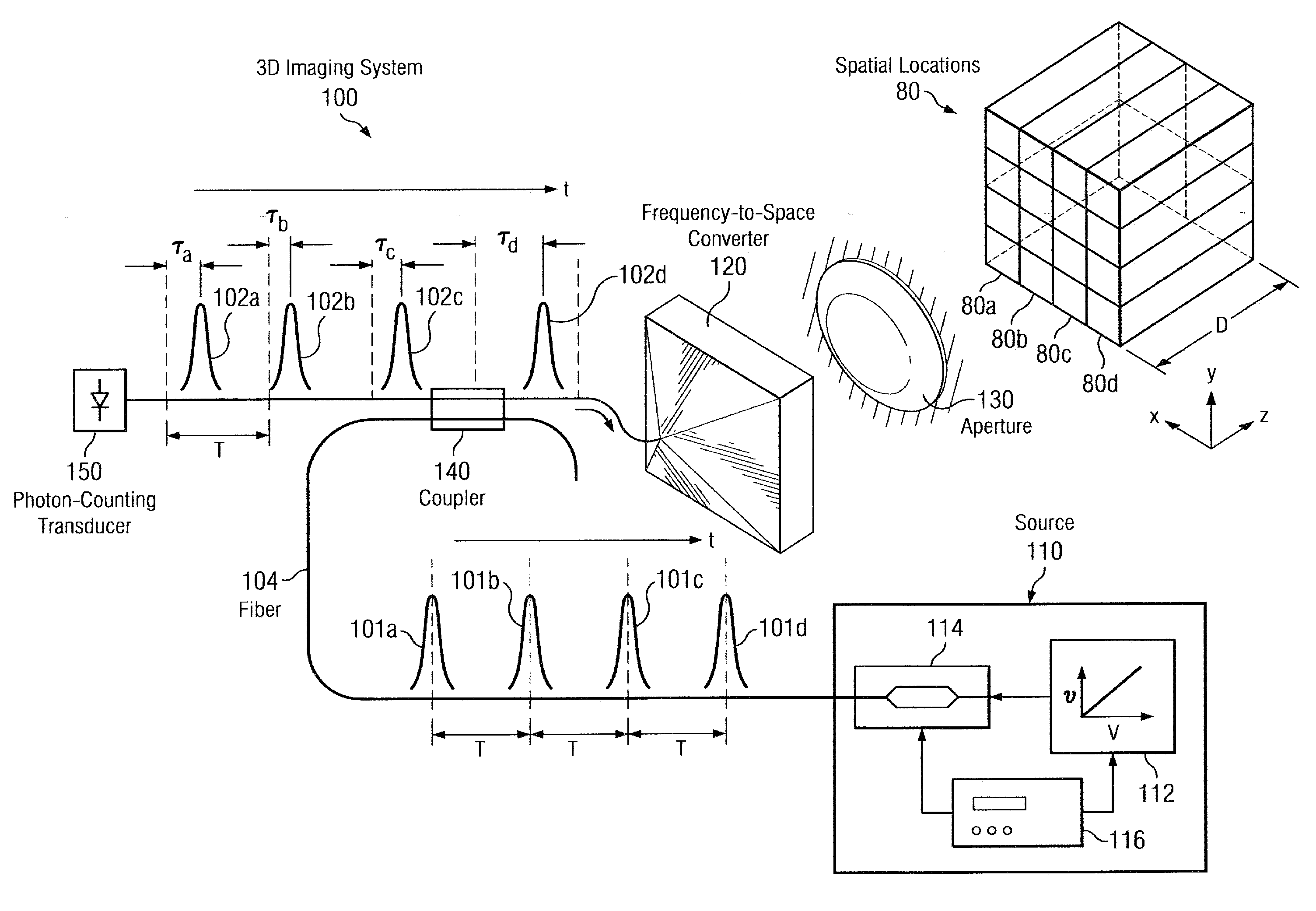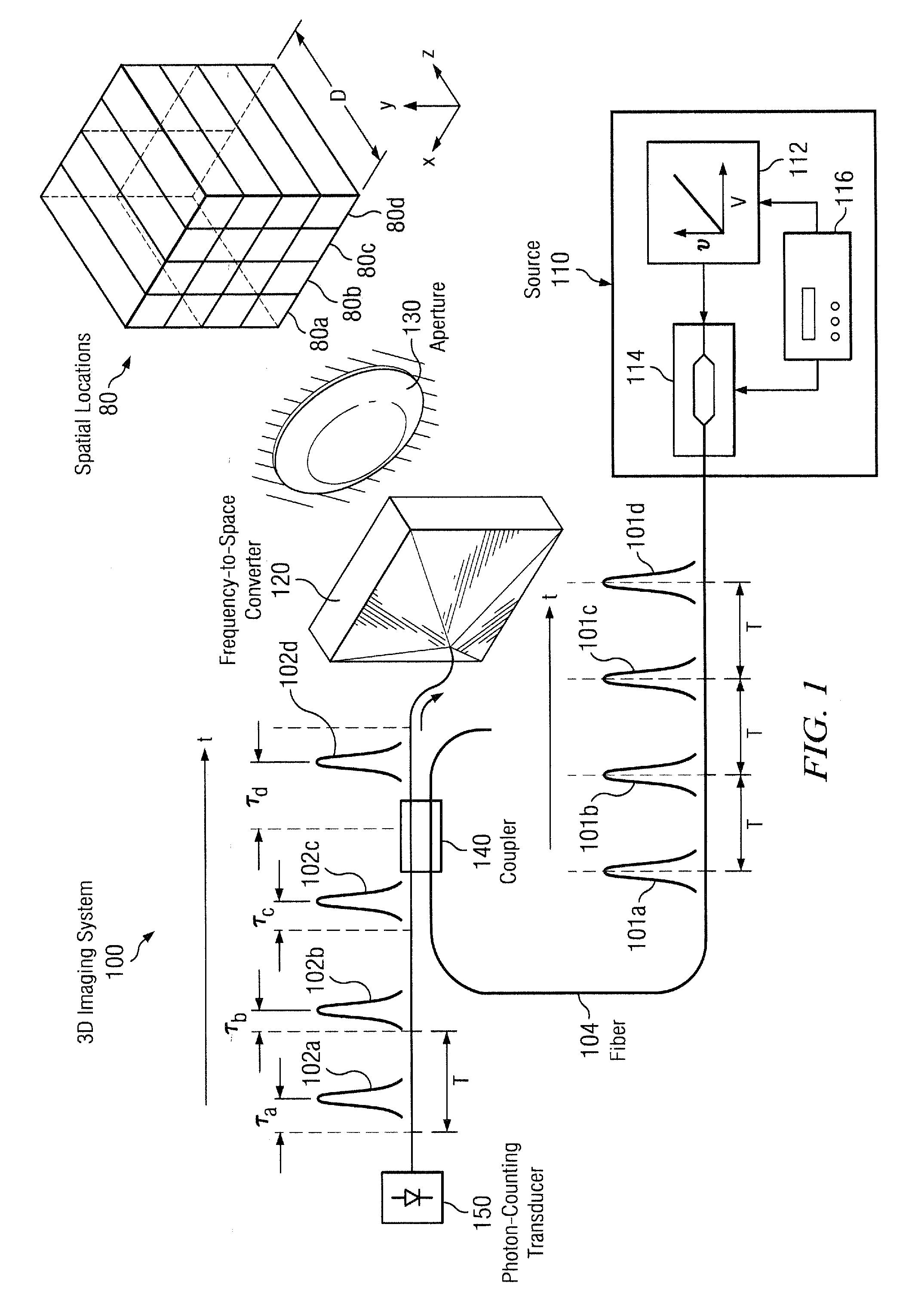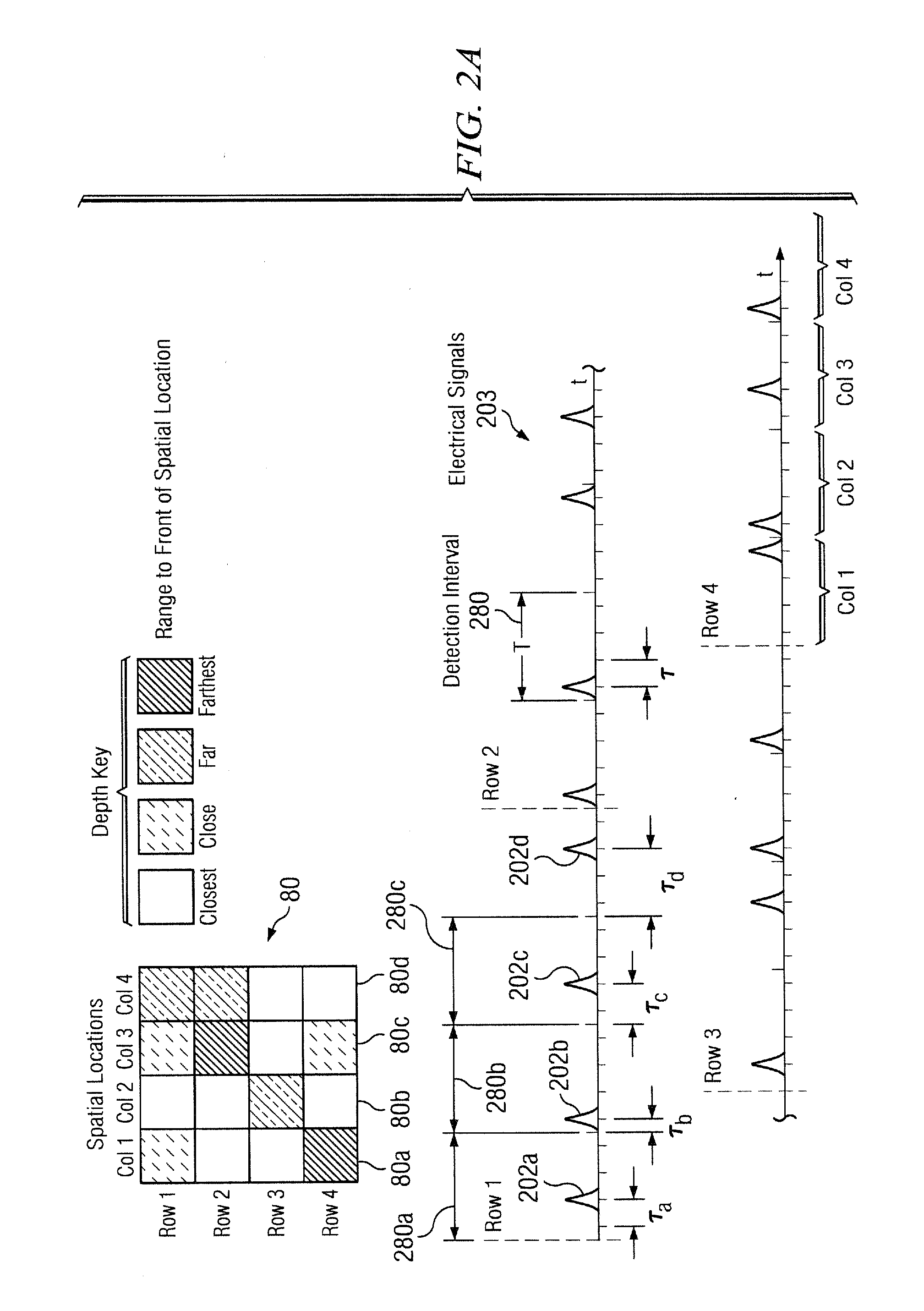Single-transducer, three-dimensional laser imaging system and method
a laser imaging system and single-transducer technology, applied in the field of single-transducer, three-dimensional laser imaging system and method, can solve the problems of difficult array arrangement of sensitive detectors with lower timing jitter, often limited range resolution, etc., to achieve small timing jitter, eliminate or reduce the limit of range resolution, the effect of improving range resolution
- Summary
- Abstract
- Description
- Claims
- Application Information
AI Technical Summary
Benefits of technology
Problems solved by technology
Method used
Image
Examples
Embodiment Construction
[0014]A description of example embodiments of the invention follows.
[0015]FIG. 1 shows a monostatic three-dimensional (3D) imaging system 100 that maps pulses 101a-101d (collectively, pulses 101) to corresponding spatial locations 80a-80d (collectively, spatial locations 80) based on the center frequencies of the pulses 101. For clarity, only the first row of spatial locations 80a-80d and the corresponding pulses 101a-101d are labeled in FIG. 1. The pulses 101 are emitted by a source 110 that includes a tunable laser 112 coupled to a pulse carver 114. A waveform generator 116 applies a voltage to the tunable laser 112, causing the output of the laser 112 to change in frequency. For example, the laser frequency may be “chirped,” or swept from a low frequency to a high frequency (or vice versa) by applying an increasing voltage to the laser 112. At the same time, the waveform generator 114 applies a voltage to the pulse carver 114, which may include a fiber-coupled Mach-Zehnder modula...
PUM
 Login to View More
Login to View More Abstract
Description
Claims
Application Information
 Login to View More
Login to View More - R&D
- Intellectual Property
- Life Sciences
- Materials
- Tech Scout
- Unparalleled Data Quality
- Higher Quality Content
- 60% Fewer Hallucinations
Browse by: Latest US Patents, China's latest patents, Technical Efficacy Thesaurus, Application Domain, Technology Topic, Popular Technical Reports.
© 2025 PatSnap. All rights reserved.Legal|Privacy policy|Modern Slavery Act Transparency Statement|Sitemap|About US| Contact US: help@patsnap.com



